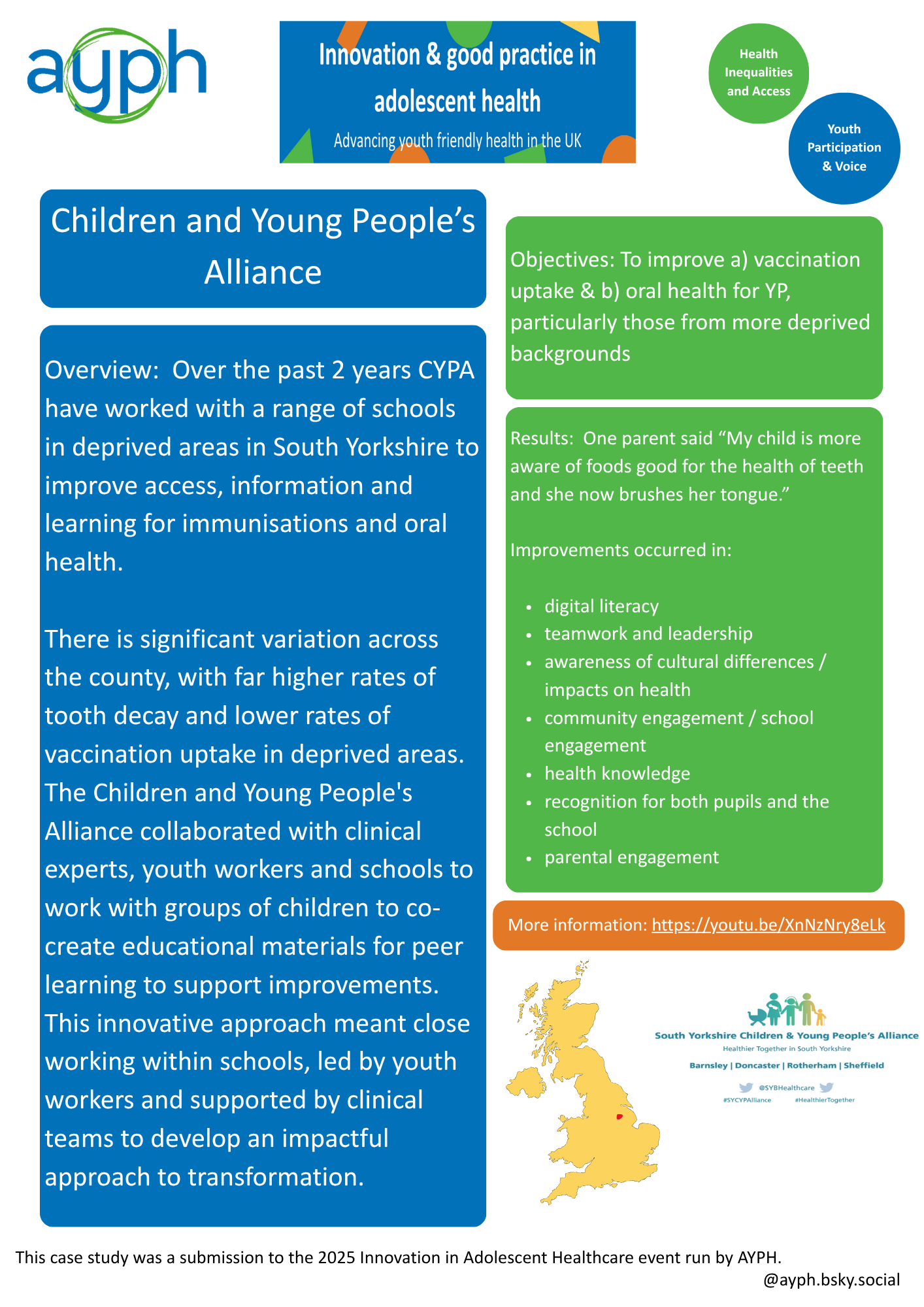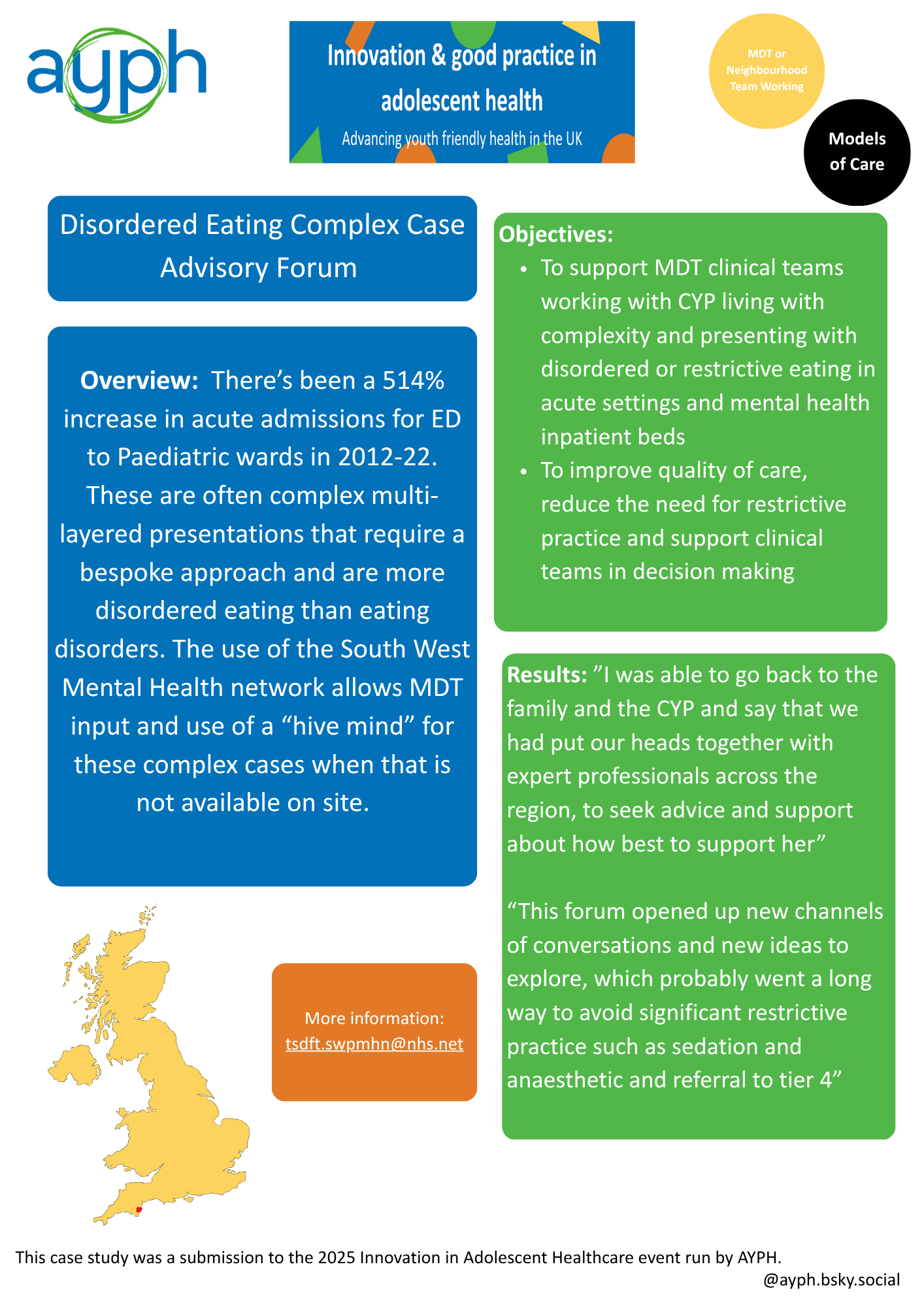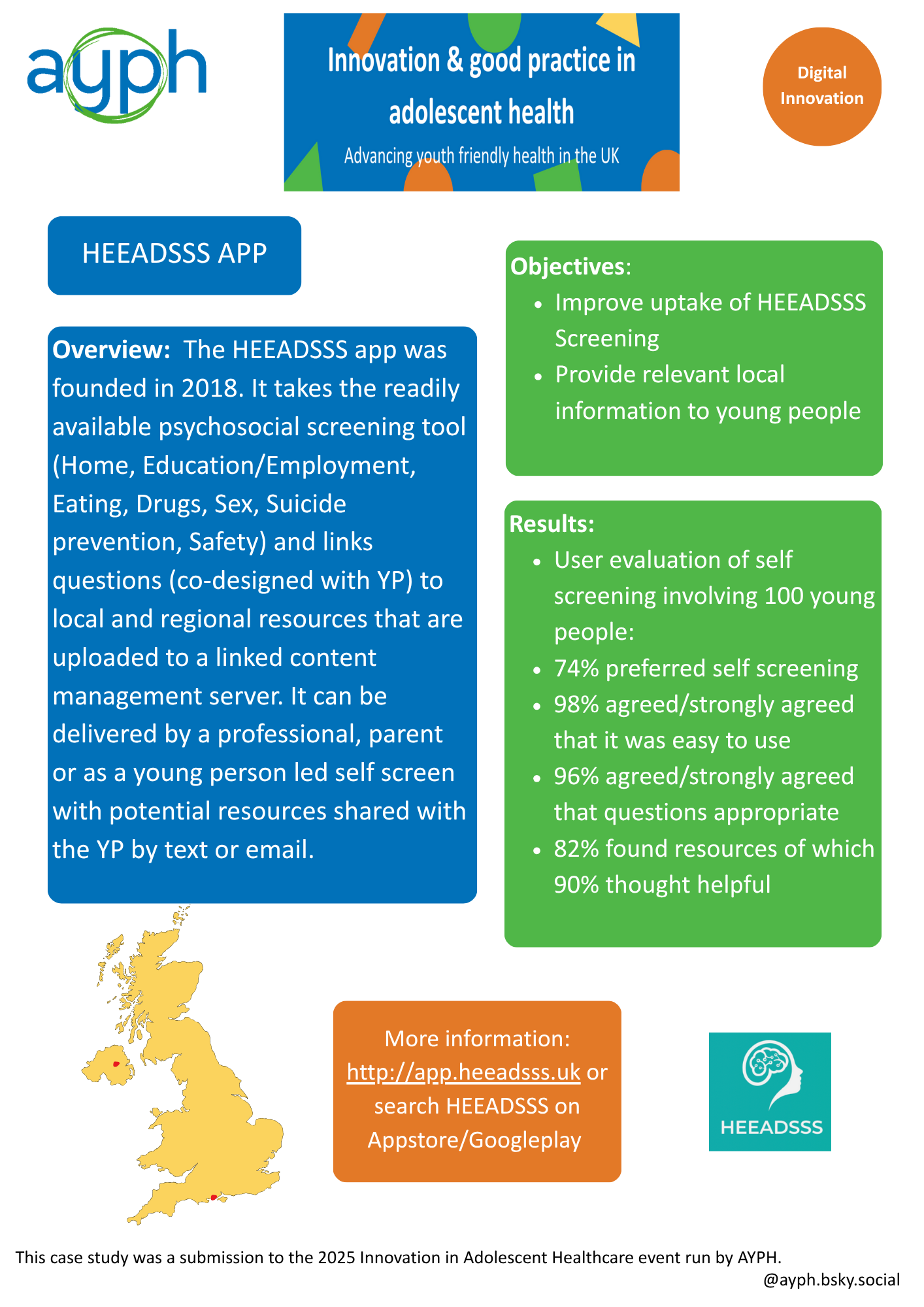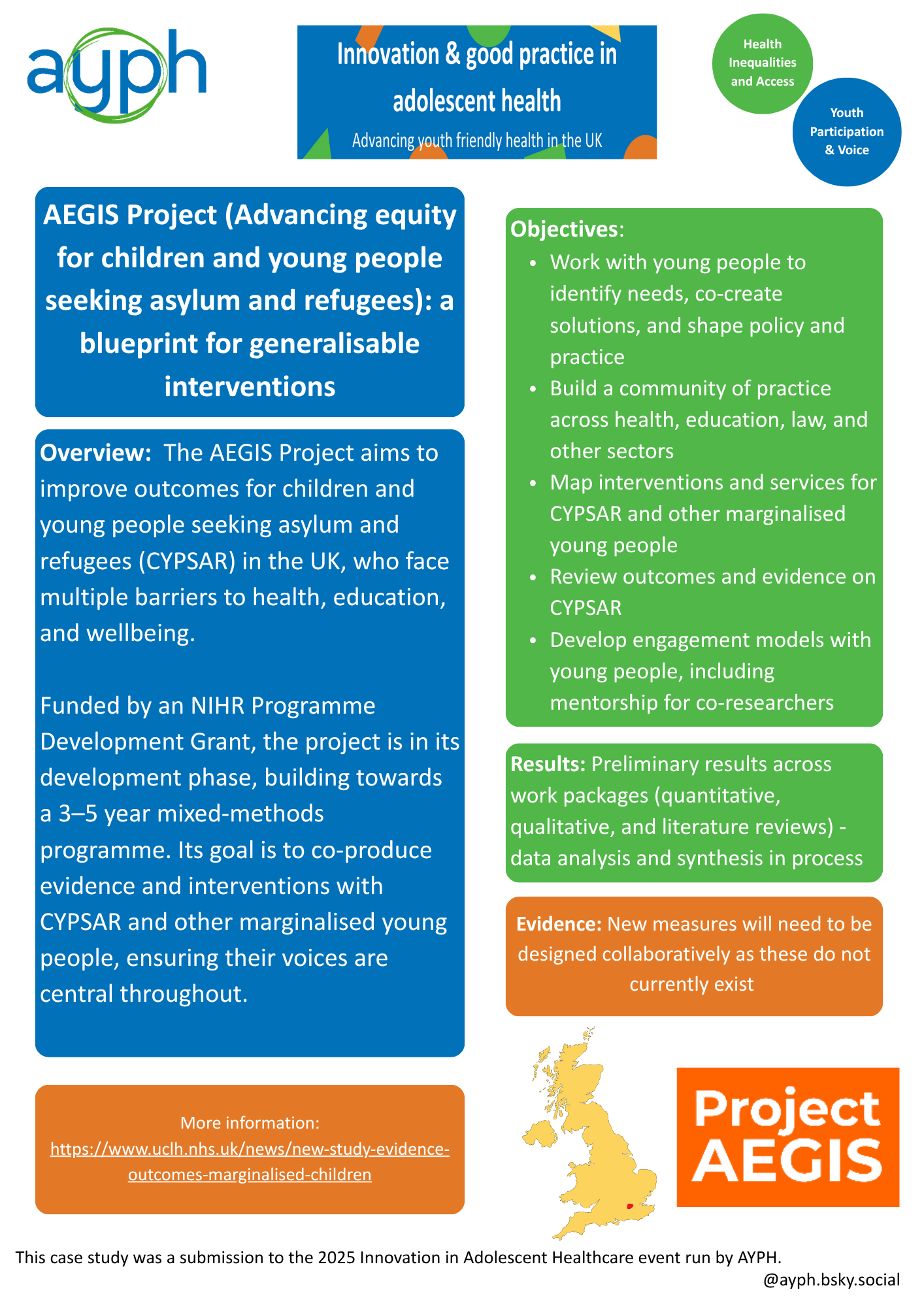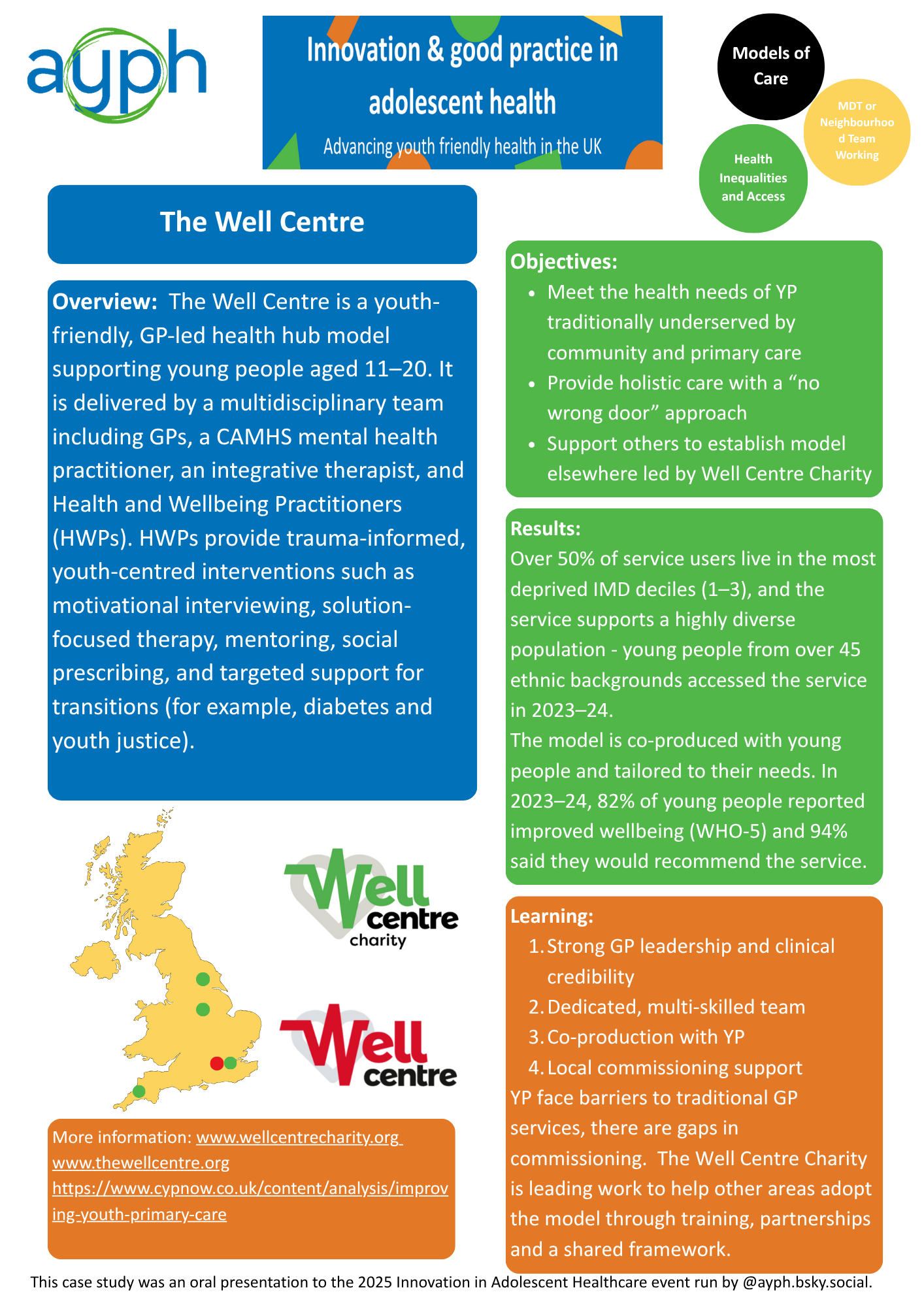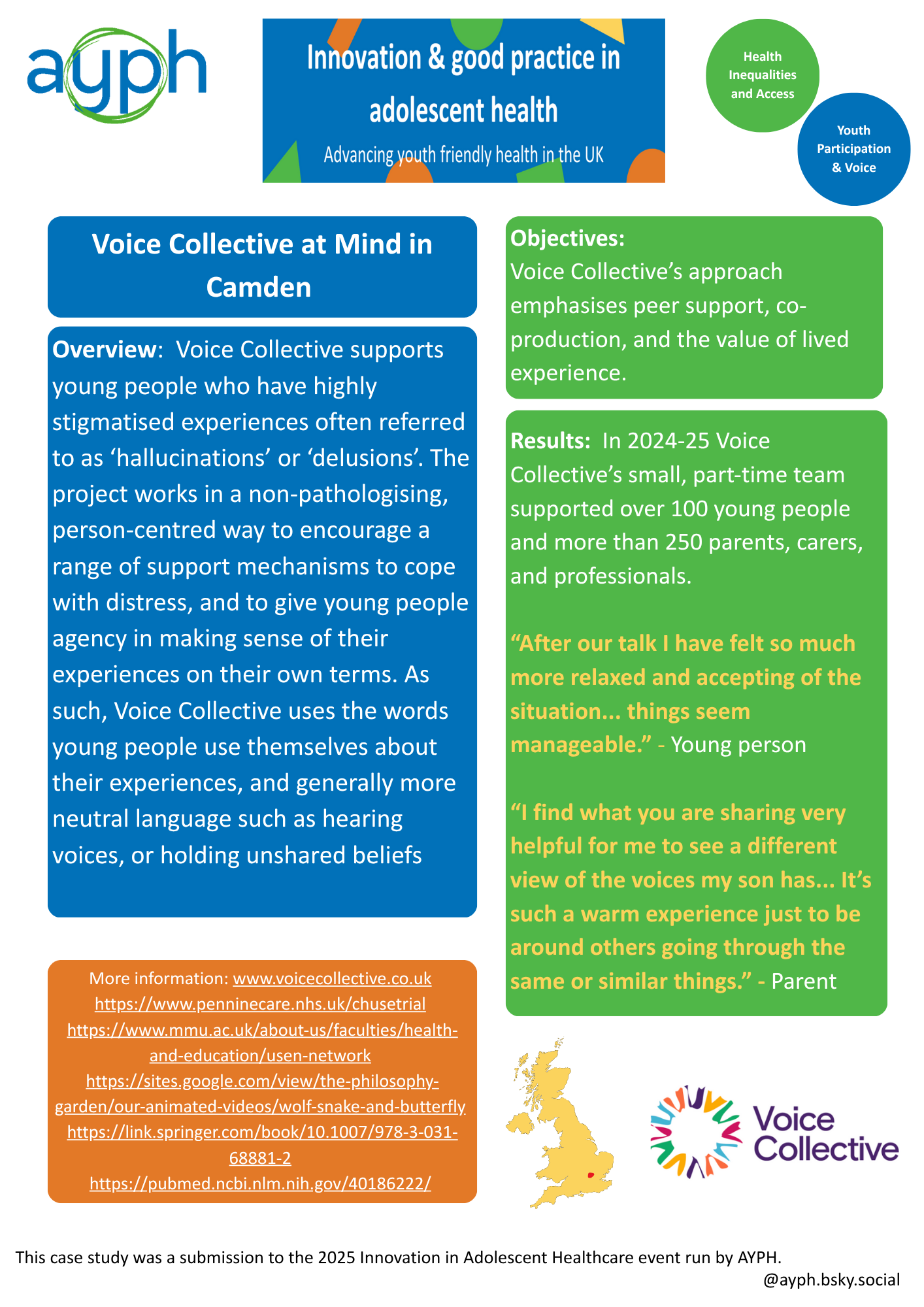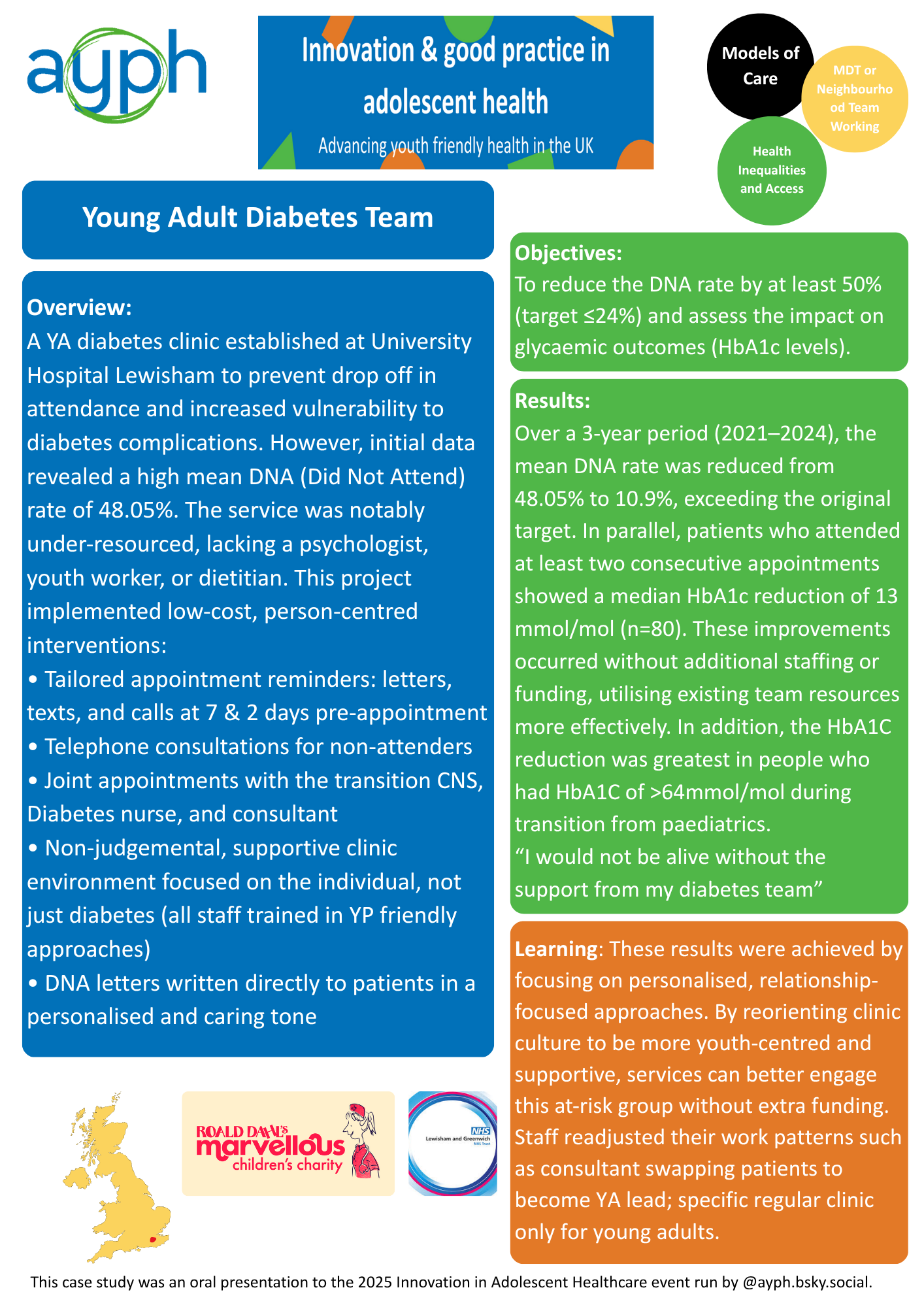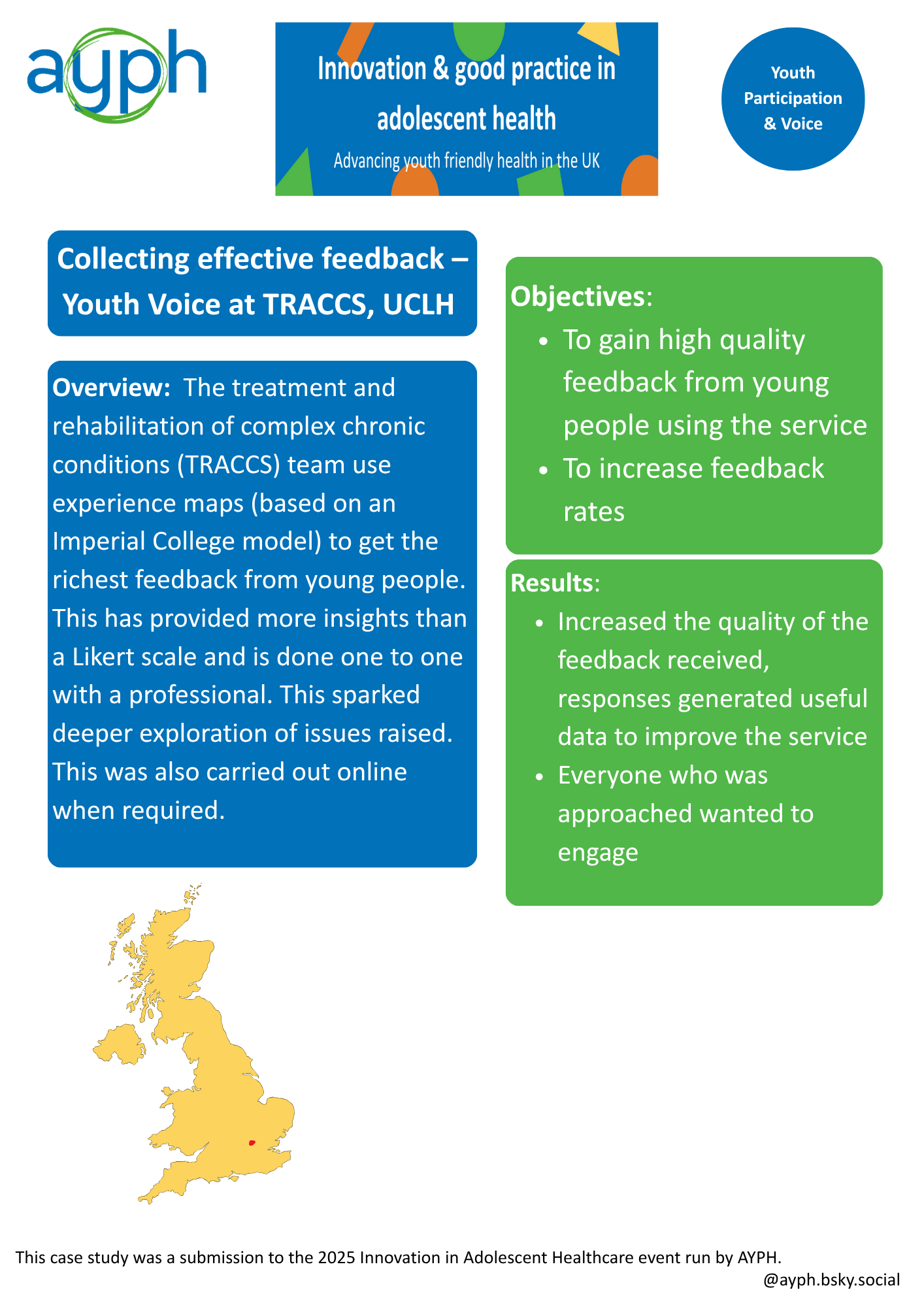
Innovation & good practice in adolescent health
In September 2025, AYPH held an event showcasing examples of innovative work taking place in the field of young people’s health. AYPH brought together young people, practitioners, researchers and funders to share work and innovations going on around England. The event highlighted the challenges facing the system and the opportunities for doing things differently to support young people’s health.
You can read case studies of the different innovations and good practice examples submitted to the event on this page.
If you would like to know more about our paradigm shift in adolescent health series or our ongoing work in this area, contact info@ayph.org.uk

Case studies
Bart's Health MUS Pathway
The development of a pathway in the hospital and community to optimise assessment and interventions for young people presenting with medically unexplained symptoms.
Children & Young People's Health Equity Collaborative
A collaborative of organisations working together to address the social determinants of health in CYP by helping the healthcare system tackle these factors working in partnership through the Marmot Principles.
Children & Young People's Alliance
An alliance of organisations working to improve access, information and learning for immunisations and oral health, working with schools, led by youth workers and supported by clinical teams to develop an impactful approach to transformation.
Disordered Eating Complex Case Advisory Forum
Supporting MDT clinical teams working with CYP living with complexity and presenting with disordered or restrictive eating in acute settings and mental health inpatient beds, to improve quality of care, reduce the need for restrictive practice and support clinical teams in decision making
Federation of Acute Trusts
Experts from across South Yorkshire and Bassetlaw, including young people, developed a regional training package to improve the awareness and knowledge of all staff who encounter young people in their role, so that they better understand their needs and can support them.
HEEADSSS App
The HEEADSSS app is a psychosocial screening tool (Home, Education/Employment, Eating, Drugs, Sex, Suicide prevention, Safety) and links
questions (co-designed with YP) to local and regional resources that are uploaded to a linked content management server.
Mental Health Data Dashboard
The South West Mental Health network is
tracking data to looking at mental health admissions on the acute wards, bed occupancy, impact on staffing, diagnosis
and baseline on admission, NG tube feeding etc.
PANELS
Developed and delivered in collaboration
with a group of young advisors, the project is bringing together local young people and people working in statutory and community services in North East London to explore how young people’s participation can lead to more responsive, inclusive and sustainable health and wellbeing services.
The AEGIS Project
The AEGIS Project aims to improve outcomes for children and young people seeking asylum and refugees (CYPSAR) in the UK, who face multiple barriers to health, education, and wellbeing by co-producing evidence and interventions with CYPSAR and other marginalised young people, ensuring their voices are
central throughout.
The Well Centre
Voice Collective
Voice Collective supports young people who have highly stigmatised experiences often referred to as ‘hallucinations’ or ‘delusions’. The project works in a non-pathologising, person-centred way to encourage a range of support mechanisms to cope with distress, and to give young people agency in making sense of their experiences on their own terms.
UHB Youth Voice Council
Young Adult Diabetes Team
Youth voice at TRACCS, UCLH
The treatment and rehabilitation of complex chronic conditions (TRACCS) team use experience maps (based on an
Imperial College model) to get the richest feedback from young people.
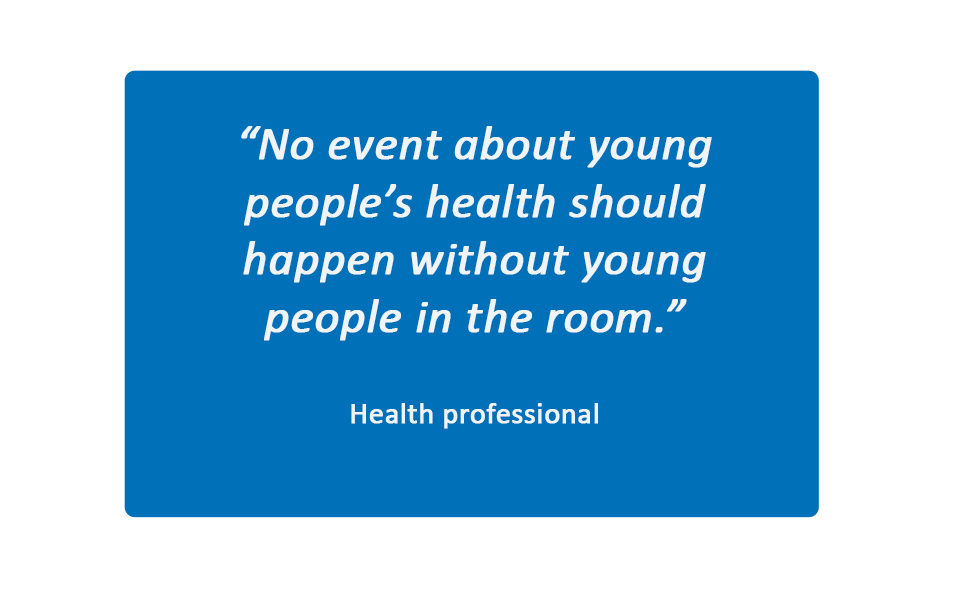
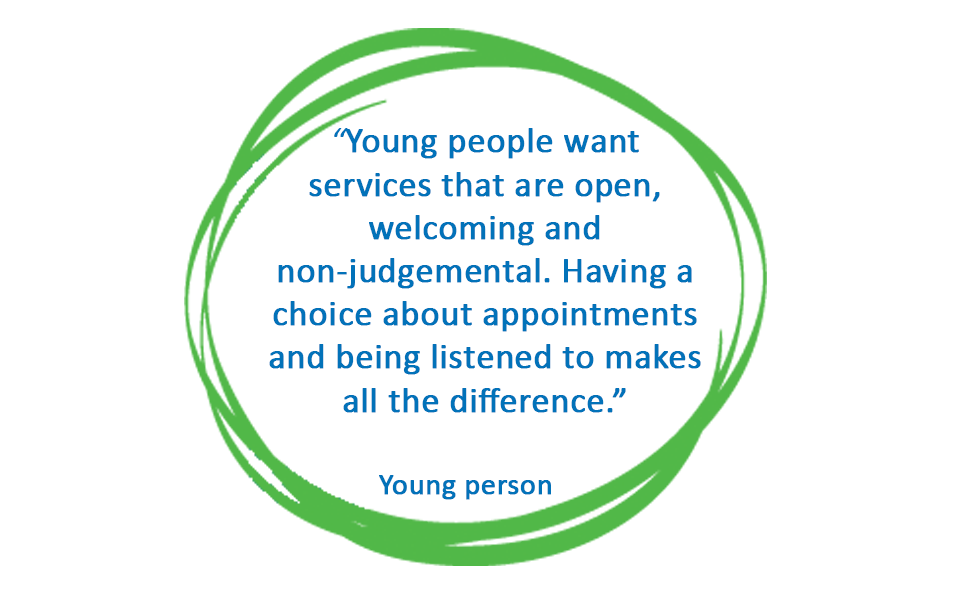
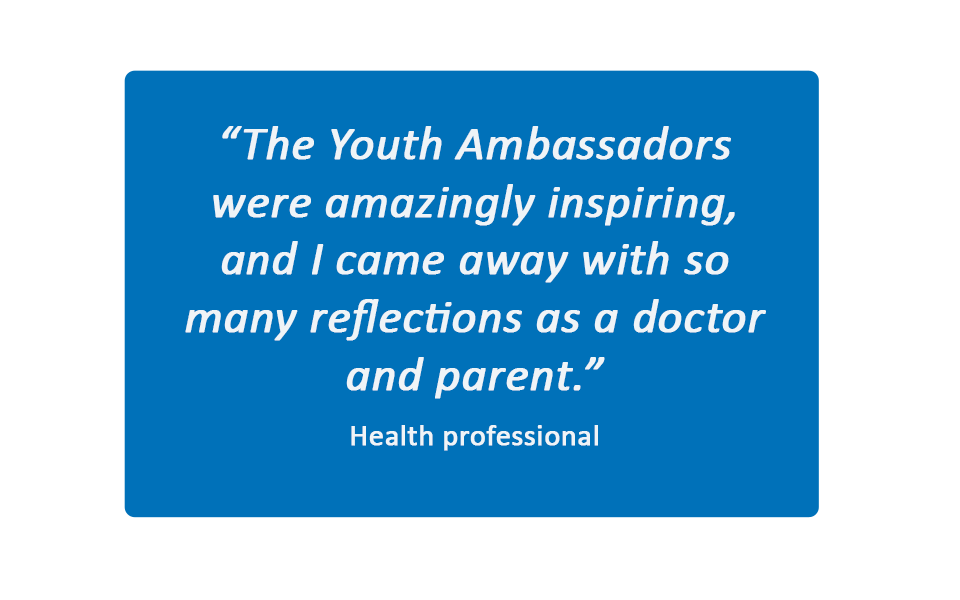
What's going on in health services for young people?
Innovation and Good Practice in Adolescent Health
Partners: The event was a partnership between the NIHR funded Project Development Grant and the Association for Young People’s Health. We would also like to thank the young people who attended and presented at the event, the organisations and people who submitted their work and presented at the event, as well as the attendees. We are very grateful to them all for their contribution.




